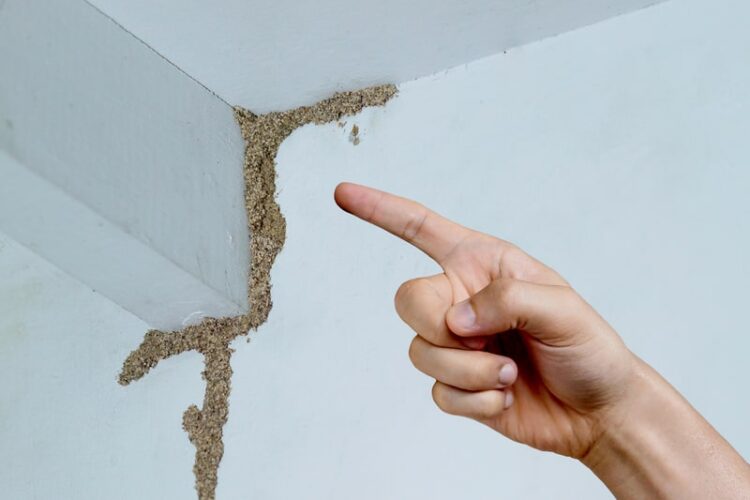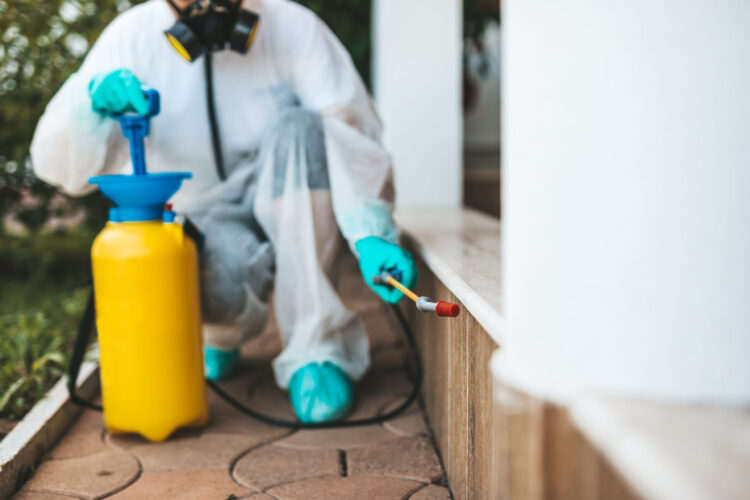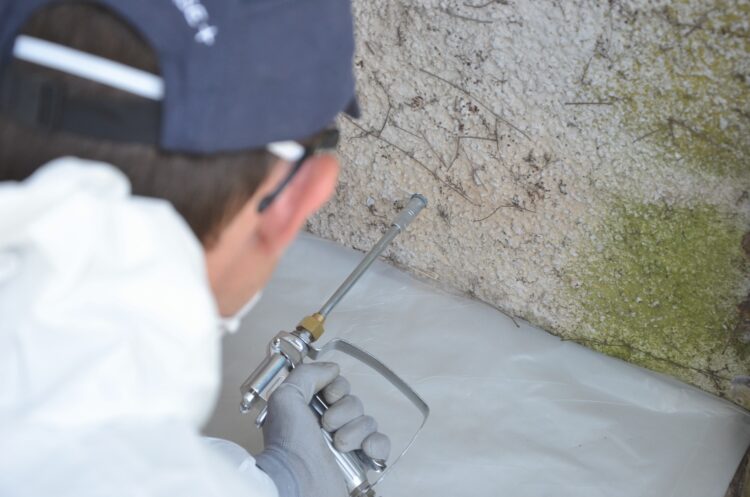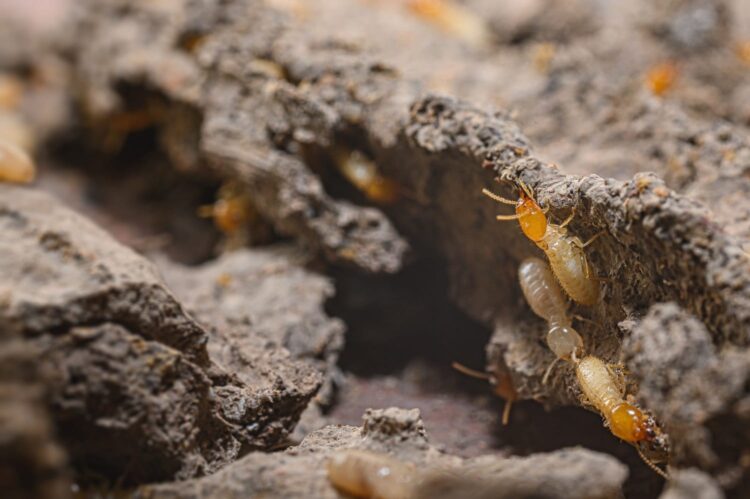Termites pose a significant threat to homes and buildings, making it crucial to identify the source of termite problems early.
Recognizing the signs of a termite infestation and understanding professional methods for tracking and treating these pests can save homeowners from costly repairs.
Table of Contents
Recognizing the Signs of Termite Infestation

Mud Tubes: Termites construct mud tubes as protective tunnels between their nests and food sources.
These tubes, made from soil, saliva, and excrement, are often found along foundation walls, beams, or other wooden structures. They protect termites from predators and dehydration, indicating a nearby colony.
Dark Stains and Patches: Sub-nests within walls can cause mud stains and dark patches. These stains result from termites bringing soil and moisture into the walls to create a suitable living environment.
The presence of these patches can signal active termite activity inside your home. Addressing this early can prevent further structural damage, often involving professional treatment options such as termite fumigation.
Flying Termites: Also known as swarmers, winged termites are responsible for expanding the colony. Their presence, especially near windows and lights, is a clear sign of an active infestation. These termites are often seen during warm, humid weather as they leave their nest to start new colonies.
Discarded wings found around your home are also a common indicator of their presence. Noticing swarmers or their wings is a critical warning that requires immediate action, potentially including termite fumigation to control the spread.
Deterioration of Timber: Termites consume wood from the inside out, leaving behind hollowed-out structures. Signs of damage include buckling wood, swollen floors, and hollow sounds when tapping on wooden surfaces. This internal consumption often goes unnoticed until significant damage has occurred.
Regular inspections can help identify early signs of timber deterioration, reducing the need for extensive repairs and emphasizing the importance of termite fumigation as a preventive measure.
Unusual Clicking Sounds: Termites are noisy eaters. Clicking sounds within walls may indicate termites at work. These sounds are made by soldier termites banging their heads against walls or by the movement of worker termites.
Hearing these unusual noises, especially at night when the house is quiet, can be a disturbing sign of an active infestation. Professional pest control services can use specialized equipment to detect these sounds more accurately and determine if termite fumigation is necessary.
Recognizing these signs of termite infestation early is crucial in protecting your home from extensive damage. Implementing professional treatments, including termite fumigation, can effectively eliminate the infestation and provide long-term protection.
Regular inspections and proactive measures can help maintain a termite-free environment, ensuring the safety and integrity of your home.
Professional Methods for Tracking Termites

Termidor® Treatment: Termidor® is a widely used termiticide that spreads throughout termite colonies via contact. When termites come into contact with treated areas, they transfer the poison to other colony members, effectively eliminating the infestation over time.
Listening Devices: Professionals use advanced listening devices to detect the sounds termites make within walls. These devices can pick up the subtle noises of termites eating or moving through wood, helping to pinpoint the infestation’s location.
Moisture Meters: High moisture levels attract termites. Moisture meters help professionals identify damp areas in homes that may be at risk for infestation. These tools measure the moisture content in wood and other building materials.
Visual Inspection: A thorough visual inspection by a professional involves examining potential entry points, such as cracks in the foundation, gaps around utility lines, and other vulnerable areas. They also look for signs of damage and active termite colonies.
Identifying Active Termite Areas
Wall Damage: Signs of termite activity within walls include bulging paint, soft walls, and small holes. These indicators suggest termites are tunneling through the wall’s structure.
Ceiling and Floor Issues: Termite damage can cause ceilings to sag and floors to dip. These structural issues are often accompanied by bubbling or cracked paint and can indicate a severe infestation.
Foundation and Structural Posts: Inspecting the foundation and structural posts for mud tubes and damage is essential. Termites often use these areas to access the home, making them prime spots for signs of activity.
Surrounding Environment: Areas around the home, such as mulch beds, firewood stacks, and other organic materials, should be checked for termite presence. These materials provide ideal conditions for termites to thrive.
Treating the Termite Infestation

Wall Void Treatments: Injecting Termidor® or other termiticides directly into infested walls can effectively eliminate termites hiding within. This method targets the colony at its source and prevents further damage.
Trenching and Rodding: Creating a chemical barrier around the home involves digging trenches and rodding termiticides into the soil. This method protects the home by preventing termites from entering.
Continuous Treatment Zones: Establishing continuous treatment zones ensures that termites consistently come into contact with treated areas. This approach provides long-lasting protection and helps prevent future infestations.
Preventative Measures and Long-term Solutions
Annual Termite Inspections: Regular professional inspections are crucial for early detection and prevention of termite infestations. Annual checks can identify new activity before it becomes a severe problem.
Professional inspectors have the expertise and tools to detect early signs of termite activity that might be missed by the untrained eye. These inspections can uncover hidden infestations in walls, floors, and other hard-to-reach places.
Moisture Control: Reducing moisture around the home is key to deterring termites. This can be achieved by fixing leaks, ensuring proper drainage, and using dehumidifiers in damp areas.
Proper Storage of Wood and Organic Materials: Keeping firewood, mulch, and other organic materials away from the home minimizes the risk of attracting termites. Store these items at least 20 feet from the house and off the ground.
The Bottom Line
Identifying and addressing termite problems requires vigilance and professional expertise.
Recognizing signs of infestation, utilizing professional tracking methods, and implementing effective treatments and preventative measures, including termite fumigation, are essential steps in protecting your home from these destructive pests.
Seeking professional help ensures effective and long-lasting solutions, safeguarding your property for the future.
